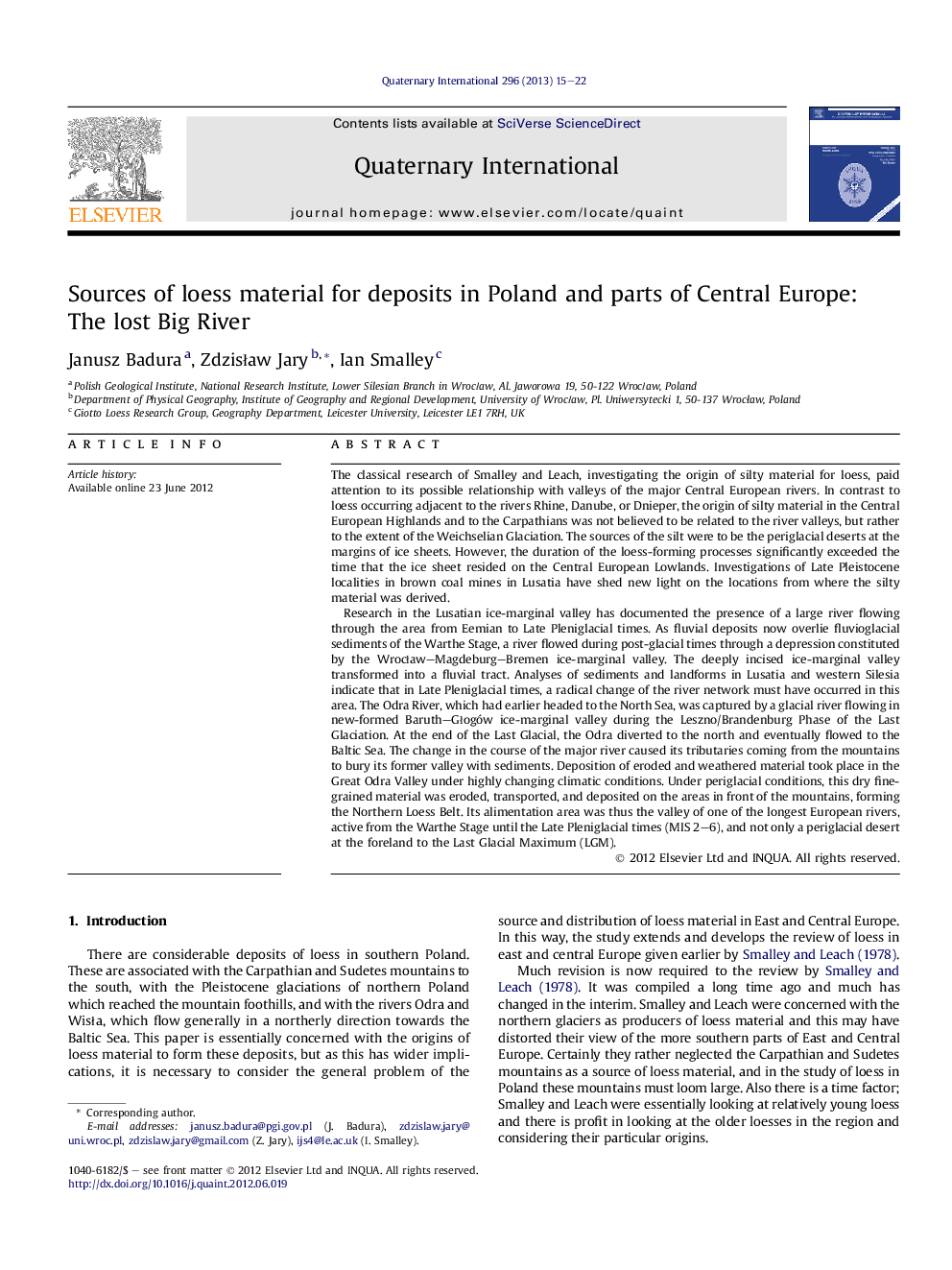| Article ID | Journal | Published Year | Pages | File Type |
|---|---|---|---|---|
| 1042208 | Quaternary International | 2013 | 8 Pages |
The classical research of Smalley and Leach, investigating the origin of silty material for loess, paid attention to its possible relationship with valleys of the major Central European rivers. In contrast to loess occurring adjacent to the rivers Rhine, Danube, or Dnieper, the origin of silty material in the Central European Highlands and to the Carpathians was not believed to be related to the river valleys, but rather to the extent of the Weichselian Glaciation. The sources of the silt were to be the periglacial deserts at the margins of ice sheets. However, the duration of the loess-forming processes significantly exceeded the time that the ice sheet resided on the Central European Lowlands. Investigations of Late Pleistocene localities in brown coal mines in Lusatia have shed new light on the locations from where the silty material was derived.Research in the Lusatian ice-marginal valley has documented the presence of a large river flowing through the area from Eemian to Late Pleniglacial times. As fluvial deposits now overlie fluvioglacial sediments of the Warthe Stage, a river flowed during post-glacial times through a depression constituted by the Wrocław–Magdeburg–Bremen ice-marginal valley. The deeply incised ice-marginal valley transformed into a fluvial tract. Analyses of sediments and landforms in Lusatia and western Silesia indicate that in Late Pleniglacial times, a radical change of the river network must have occurred in this area. The Odra River, which had earlier headed to the North Sea, was captured by a glacial river flowing in new-formed Baruth–Głogów ice-marginal valley during the Leszno/Brandenburg Phase of the Last Glaciation. At the end of the Last Glacial, the Odra diverted to the north and eventually flowed to the Baltic Sea. The change in the course of the major river caused its tributaries coming from the mountains to bury its former valley with sediments. Deposition of eroded and weathered material took place in the Great Odra Valley under highly changing climatic conditions. Under periglacial conditions, this dry fine-grained material was eroded, transported, and deposited on the areas in front of the mountains, forming the Northern Loess Belt. Its alimentation area was thus the valley of one of the longest European rivers, active from the Warthe Stage until the Late Pleniglacial times (MIS 2–6), and not only a periglacial desert at the foreland to the Last Glacial Maximum (LGM).
